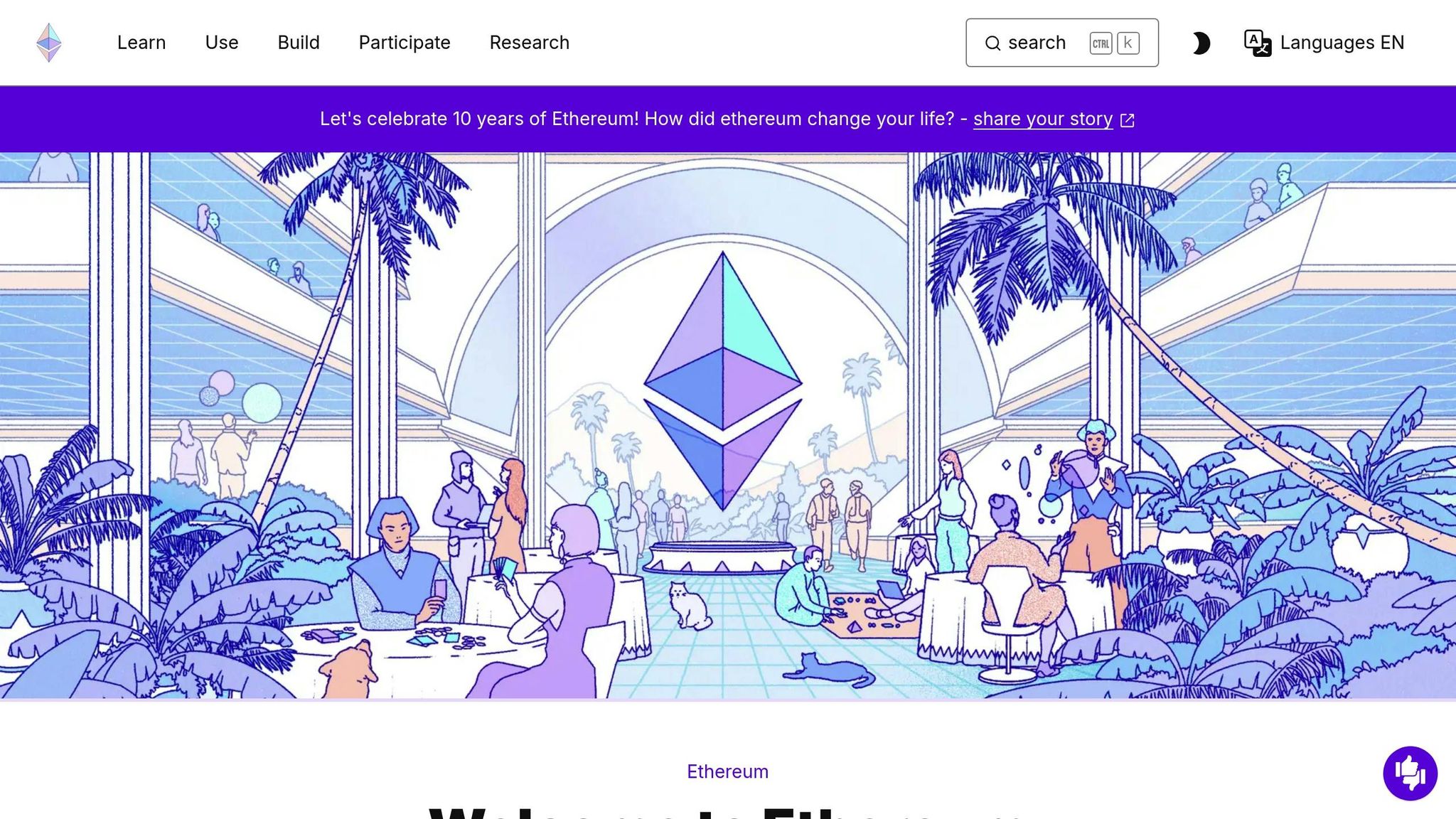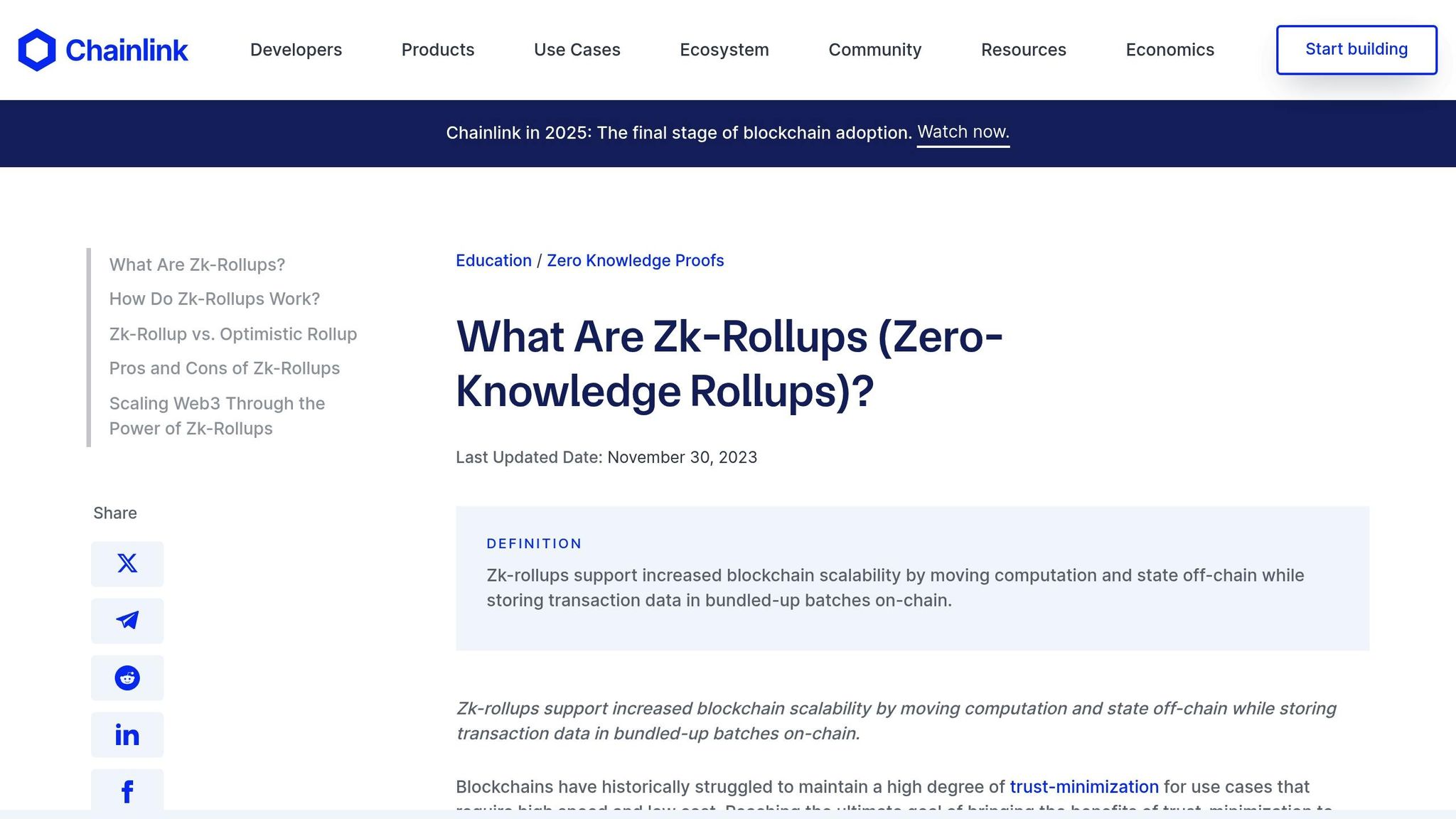Blockchain gaming faces a major challenge: scalability. Without efficient transaction handling, games suffer from delays, high fees, and limited features. But solutions exist, and they’re transforming the industry.
Here’s what you need to know:
- Scalability matters: It ensures fast, low-cost transactions, enhancing gameplay.
- Main issues: High gas fees, slow networks, and game design limits.
- Solutions:
- Base chain upgrades: Better protocols like Ethereum’s Proof of Stake.
- Layer 2 options: Rollups, sidechains, and state channels for speed.
- Gaming-specific tools: Layer 3 solutions and hybrid architectures.
Quick takeaway: Choose scaling methods that match your game’s needs and focus on balancing performance, cost, and player experience. Platforms like Polygon and ZK rollups are leading the charge, making blockchain gaming smoother and more accessible.
Ethereum scaling solutions for games | A brief overview

Main Scalability Problems in Gaming
Blockchain gaming faces several hurdles that affect both developers and players, slowing its path to widespread adoption and limiting its growth.
Transaction Cost Issues
When Layer 1 networks experience heavy traffic, transaction fees can skyrocket. This makes even basic in-game activities costly for players [1].
Speed and Network Challenges
Congested networks can disrupt real-time gameplay. Many blockchain platforms aren’t equipped to handle the speed and volume modern games demand, causing delays in processing transactions and confirming smart contract interactions. These delays make it difficult to implement time-sensitive game mechanics, often pushing developers to use hybrid solutions that mix on-chain and off-chain processes.
Game Design Limitations
Scalability issues complicate real-time interactions and limit how often blockchain actions can occur – both critical for engaging freemium games [1]. These limitations also restrict the ability to include advanced features. As interest in NFT-based games and metaverse products continues to rise [1], overcoming these scalability challenges is essential for the industry’s future. Addressing these problems is key to unlocking new possibilities in blockchain gaming.
Types of Scalability Solutions
Blockchain gaming uses three main approaches to address scalability challenges. These methods focus on overcoming specific hurdles in blockchain gaming.
Base Chain Improvements
Base chain improvements focus on upgrading the core blockchain protocols to increase speed and reduce delays. These updates benefit the entire network but require extensive coordination.
Protocol & Network Optimization: Leading blockchain networks make core updates to better support gaming applications. For instance, Ethereum’s shift to Proof of Stake and its plans for sharding are examples of such improvements. While these changes take time, they ensure strong security.
Now, let’s look at solutions built on top of these base chains.
Second Layer Options
Second layer solutions operate on existing blockchains, offering quick scalability without altering the base chain. These solutions are ideal for handling high transaction volumes in fast-paced game environments.
| Solution Type | Primary Benefit | Best Use Case |
|---|---|---|
| Rollups | High throughput | Complex game economies |
| Sidechains | Independent validation | Large-scale multiplayer games |
| State Channels | Instant transactions | Fast-paced gameplay mechanics |
In addition to these, custom solutions are designed specifically for gaming needs.
Gaming-Specific Solutions
These solutions address the unique demands of gaming, such as intricate mechanics and economies.
Layer 3 Solutions: Tailored Layer 3 solutions manage specific game requirements, focusing on fast transactions and low latency while ensuring blockchain security.
"We pinpoint game features that drive revenue and engagement, then deliver targeted PRDs." [1]
Hybrid Architectures: These combine on-chain and off-chain processing to balance performance and blockchain features. This setup is ideal for critical elements like asset ownership and trading.
Performance Optimization: Platforms designed for gaming help cut transaction costs and speed up player actions. They also include built-in tools for inventory management, trading, and achievement systems.
"Let us leverage our industry-leading experience to deliver a custom solution to your product’s needs. We’re not cookie cutter – by adapting our approach and deliverables to get the best result for our clients, we’ve thrived in our field for years longer than any other consultancy." [1]
sbb-itb-fd4a1f6
Successful Scaling Examples
Scalability challenges in blockchain are being addressed through practical, real-world solutions that deliver measurable results.
ZK Rollups in Action

ZK rollups handle transactions off-chain while using on-chain cryptographic proofs to maintain security. This approach significantly increases transaction throughput and reduces costs. Platforms like Polygon also provide similar scaling options, making them a popular choice for developers.
Polygon‘s Role in Blockchain Gaming

Polygon has become a go-to platform for scaling blockchain games. It cuts down transaction times and network fees, which are essential for smooth gameplay. Beyond that, Polygon offers tools that help developers integrate scaling solutions with ease, all while maintaining decentralization.
Lessons from Implementations
These examples highlight strategies developers can use to scale their projects effectively. Techniques like combining on-chain storage for key assets with off-chain processing for repetitive actions improve both performance and user experience. Additionally, methods such as asynchronous processing, batching operations, and optimizing smart contracts can further enhance scalability and engagement.
Scaling Implementation Guide
Selecting a Scaling Method
When choosing a blockchain scaling solution, focus on your game’s mechanics and the expected user load. Key considerations include transaction volume, the complexity of assets and the in-game economy, and acceptable fee levels. Aim to strike a balance between performance and decentralization that complements your game’s core loop. This decision is critical for laying the groundwork for an effective scaling plan.
Long-term Scaling Strategy
Once you’ve chosen a scaling method, your work doesn’t stop there. Continuously refining your system is crucial to keep up with player growth while maintaining engagement and revenue opportunities. A well-thought-out strategy ensures your game evolves alongside its audience.
- Economy Modeling: Regularly fine-tune your in-game economy to drive both player engagement and revenue.
- Performance Optimization: Keep an eye on on-chain and off-chain processes, making adjustments as needed to handle increasing player activity.
- Player Experience: Use real-world player data and feedback to ensure the core gameplay loop stays fun and easy to navigate.
"From modeling a brand new game economy to reverse engineering a live economy, our models optimize for revenue and fun factor." – Adrian Crook & Associates [1]
Expert Support Options
Once your strategy is in place, expert advice can help bring it to life. Adrian Crook & Associates provides tailored solutions for developers looking to maximize the potential of their blockchain games.
Their services include:
- Freemium game design optimization
- Game economy modeling
- Enhancing live operations
This targeted expertise ensures your blockchain game can scale effectively, keeping players engaged and revenue streams steady as your audience grows.
Conclusion
Scaling blockchain gaming successfully hinges on smart strategies and thoughtful execution. Balancing performance, cost, and player experience is no small feat, but proven methods can help.
Here are some key takeaways for effective scaling:
- Align technology with your game’s needs: Choose solutions like ZK rollups or Polygon platforms based on your game mechanics and expected player activity.
-
Prioritize a strong game economy: As Adrian Crook & Associates puts it:
"From modeling a brand new game economy to reverse engineering a live economy, our models optimize for revenue and fun factor" [1].
- Let data guide your decisions: Regularly analyze performance metrics and adjust to keep gameplay smooth and engaging.
The future of blockchain gaming rests on developers’ ability to scale without compromising the core player experience. Adrian Crook & Associates emphasizes this with their expertise:
"Are you measuring what matters? Need help interpreting the data? We find the signal amongst the noise, providing actionable insights to improve your live game" [1].
FAQs
How do Layer 2 solutions like rollups and sidechains help scale blockchain-based games?
Layer 2 solutions, such as rollups and sidechains, significantly enhance the scalability of blockchain games by reducing the workload on the main blockchain (Layer 1). Rollups bundle multiple transactions into a single batch, processing them off-chain and submitting a summary to the main chain, which reduces congestion and lowers transaction costs. Sidechains, on the other hand, operate as independent blockchains connected to the main chain, allowing for faster and more efficient processing of game-related transactions.
These solutions enable smoother gameplay experiences by improving transaction speeds and reducing costs, making blockchain games more accessible and enjoyable for players while maintaining the security and decentralization benefits of blockchain technology.
What challenges do developers face when scaling blockchain technology for gaming?
Developers often encounter several challenges when implementing blockchain scalability in gaming. One major issue is high transaction costs, which can make microtransactions impractical for players. Another common hurdle is network congestion, where increased activity can slow down transaction speeds, negatively impacting the gaming experience.
Additionally, integrating blockchain technology into games requires technical expertise and a deep understanding of both blockchain architecture and game design. This can lead to longer development times and higher costs. Lastly, ensuring seamless player experiences while maintaining the transparency and security benefits of blockchain can be a delicate balancing act for developers.
What’s the best way for developers to balance performance, cost, and player experience when selecting a blockchain scaling solution for their game?
Balancing performance, cost, and player experience when choosing a blockchain scaling solution requires a thoughtful approach. Developers should evaluate the specific needs of their game, such as transaction speed, network fees, and the complexity of on-chain interactions. For example, games with high transaction volumes may benefit from Layer 2 scaling solutions like rollups, which offer faster processing and lower costs.
Additionally, it’s important to consider how the chosen solution impacts the player experience. Long wait times or high fees can frustrate players, so selecting a method that ensures smooth gameplay is essential. By carefully weighing these factors, developers can implement a scalable blockchain solution that aligns with their game’s goals and enhances player satisfaction.